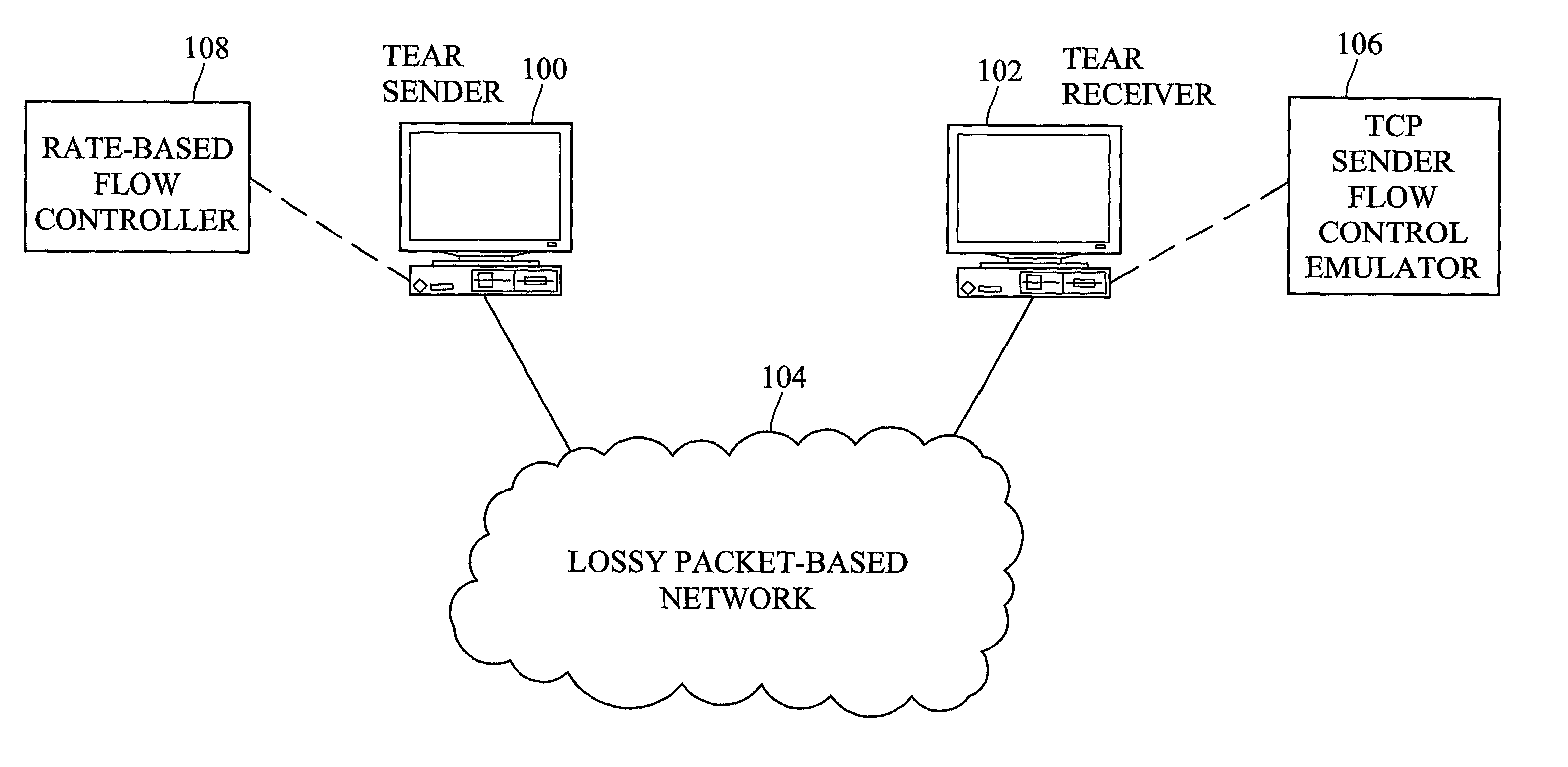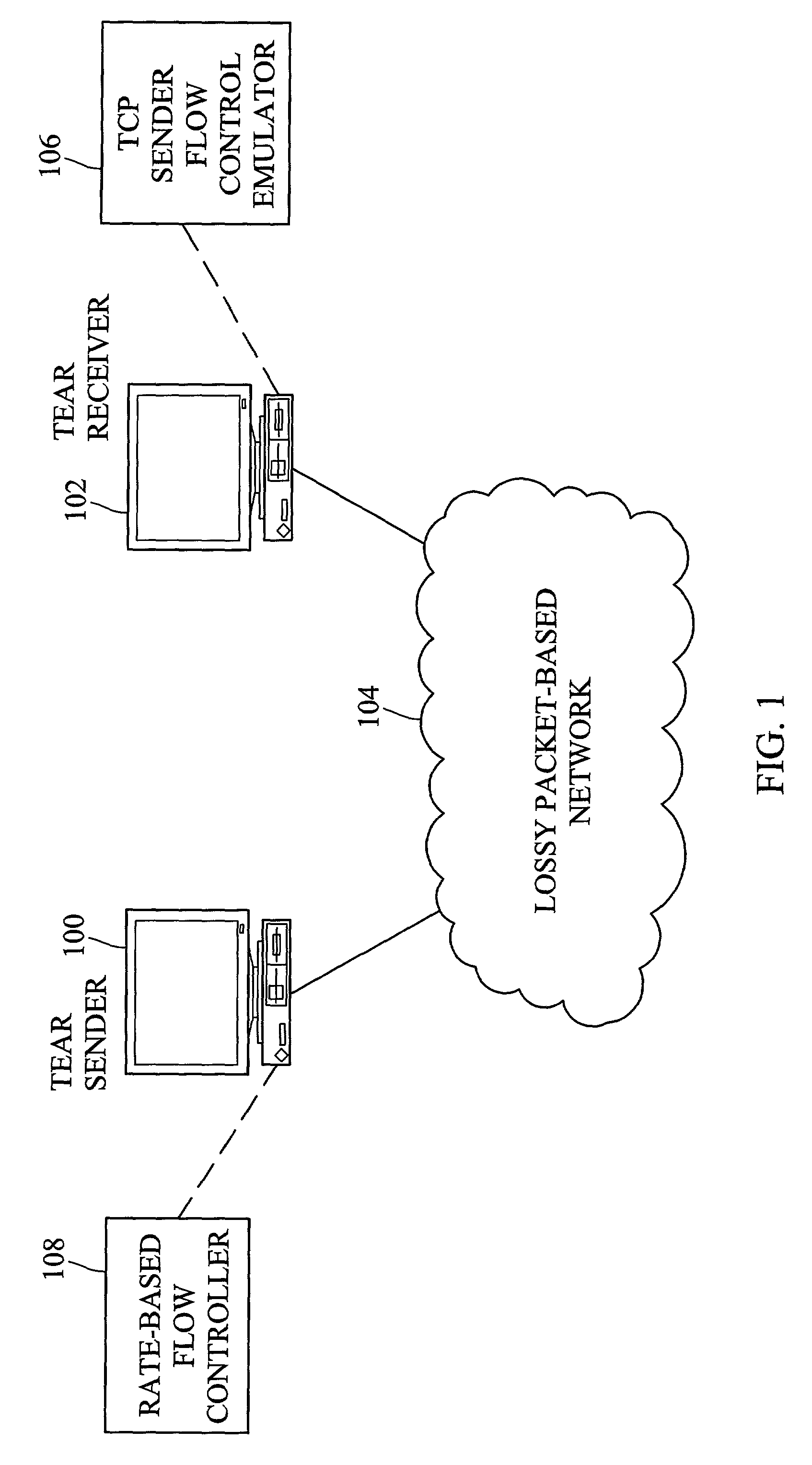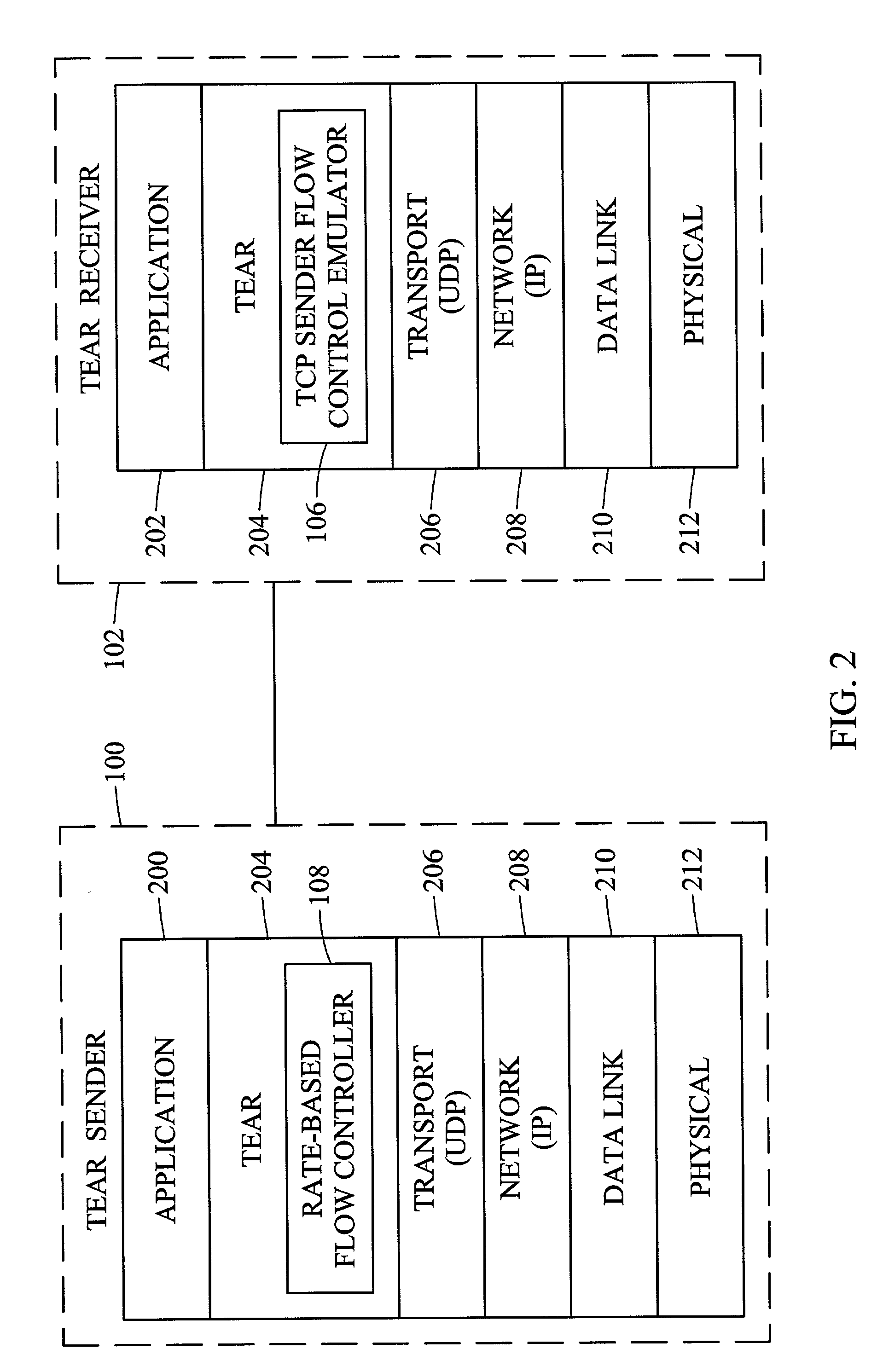Methods and systems for rate-based flow control between a sender and a receiver
a flow control and sender technology, applied in the field of method and system for flow control between a sender and a receiver, can solve the problem that sending per packet acknowledgement consumes bandwidth on the path between the receiver, and achieve the effect of smoother perception of rate fluctuations at the application
- Summary
- Abstract
- Description
- Claims
- Application Information
AI Technical Summary
Benefits of technology
Problems solved by technology
Method used
Image
Examples
Embodiment Construction
[0055]FIG. 1 illustrates a TEAR sender and a TEAR receiver including a rate-based flow control system according to an embodiment of the present invention. In FIG. 1, TEAR sender 100 and TEAR receiver 102 communicate over a lossy packet-based network 104, such as the Internet. TEAR sender 100 and tear receiver 102 may include general-purpose computing platforms, such as personal computers or workstations. According to an important aspect of the invention, TEAR receiver 102 includes a TCP sender flow control emulator 106 for emulating the flow control functions normally performed by a TCP sender and forwarding rate information to TEAR sender 100. TEAR sender 100 includes a rate-based flow controller 108 for controlling the flow of packets to TEAR receiver 102 based on rate information received from TEAR receiver 102.
[0056]FIG. 2 is a protocol layer diagram illustrating TEAR sender 100 and TEAR receiver 102 in more detail. In FIG. 2, TEAR sender 100 and TEAR receiver 102 each include c...
PUM
 Login to View More
Login to View More Abstract
Description
Claims
Application Information
 Login to View More
Login to View More - R&D
- Intellectual Property
- Life Sciences
- Materials
- Tech Scout
- Unparalleled Data Quality
- Higher Quality Content
- 60% Fewer Hallucinations
Browse by: Latest US Patents, China's latest patents, Technical Efficacy Thesaurus, Application Domain, Technology Topic, Popular Technical Reports.
© 2025 PatSnap. All rights reserved.Legal|Privacy policy|Modern Slavery Act Transparency Statement|Sitemap|About US| Contact US: help@patsnap.com



